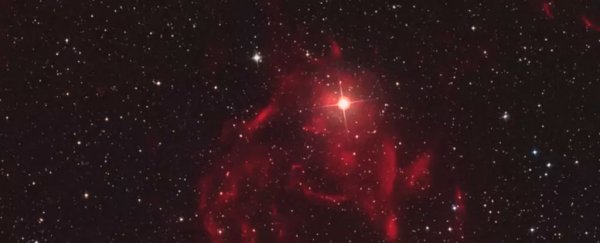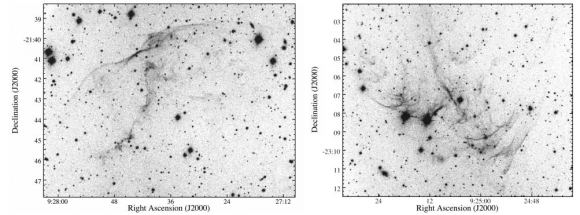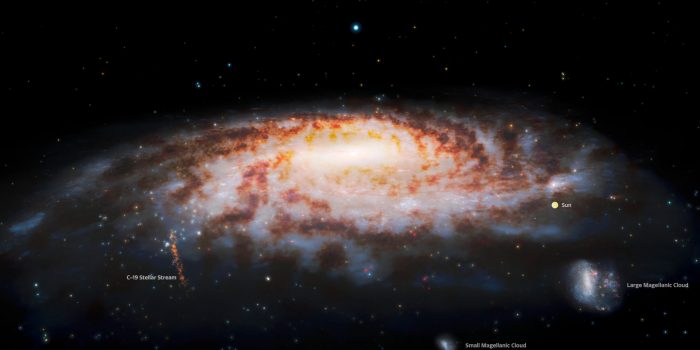Nebulae are gaseous structures lit up with radiation from nearby stars. An international team of astronomers has discovered a new type of nebulae around binary stars that they’re calling galactic emission nebulae.
The binary star YY Hya is at the center of this discovery. YY Hya is a periodic variable star comprising a K dwarf star and a hot white dwarf (WD) partner.
The study presenting this discovery is titled “YY Hya and its interstellar environment” and is published in Astrophysics and Astronomy. The lead author is Stefan Kimeswenger from the Department of Astro and Particle Physics at Innsbruck University, Austria.
Kimswenger stated that “Toward the end of their lives, normal stars inflate into red giant stars. Since a very large fraction of stars is in binary pairs, this affects the evolution at the end of their lives. In close binary systems, the inflating outer part of a star merges as a common envelope around both stars. However, inside this gas envelope, the cores of the two stars are practically undisturbed and follow their evolution like independent single stars.”
“The diameter of the main cloud is 15.6 light-years across, almost 1 million times larger than the distance of the earth to the sun and much larger than the distance of our sun to its nearest neighboring star. Moreover, fragments as large as 39 light-years apart have also been found. Since the object lies slightly above the Milky Way, the nebula was able to develop largely undisturbed by other clouds in the surrounding gas,” Kimeswenger said.

“They are too large for the field of view of modern telescopes, and at the same time, they are very faint. Moreover, their lifetime is rather short, at least when considered in cosmic time scales. It is only a few hundred thousand years,” Kimeswenger stated.
This discovery dates to the 1980s with a group of French and German amateur astronomers. They took that finding to experts at the University of Innsbruck’s Department for Astro and Particle Physics and used modern tools and technology to get conclusions.
The team found that the white dwarf’s temperature is about 66,000 Celsius (120,000 F) – which is hot for a white dwarf – and the K dwarf is about 4,400 degrees Celsius (8,000 F). The K dwarf is about one solar mass. The stars orbit each other rapidly at roughly 8 hours and are only 2.2 solar radii apart.

Because they’re in such proximity, the white dwarf heats the side of the K dwarf facing it. The heating leads to “… extreme phenomena in the spectrum of the star and to very regular variations in brightness.”
The team of astronomers speculates, and it’s not proven, that this binary star is related to the nova, or “guest star,” that ancient Chinese and Korean astronomers saw way back in 1086.
“It is even possible that this system is related to a nova observation made by Korean and Chinese astronomers in 1086. In any case, the positions of the historical observations match very well with those of our object described here,” Kimeswenger said.


